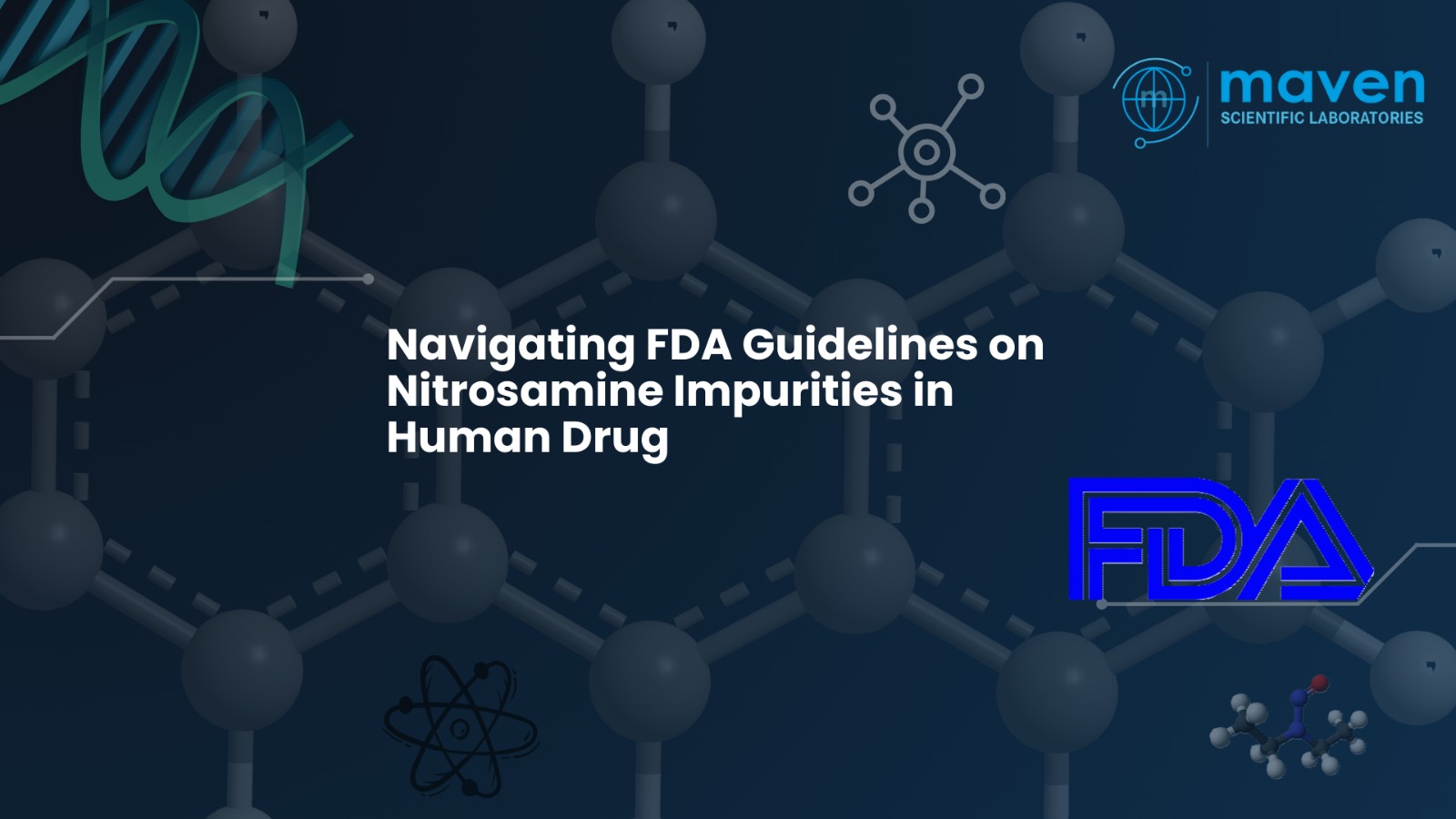
Navigating FDA Guidelines On Nitrosamine Impurities In Human Drugs
Introduction
The emergence of nitrosamine impurities as potential carcinogens in pharmaceuticals has posed significant challenges to drug manufacturers and regulatory authorities. Since their identification in mid-2018, nitrosamines have been a major concern due to their potential health risks. The FDA's response has been robust, resulting in comprehensive guidelines aimed at mitigating these impurities. This blog provides a detailed overview of the FDA guidelines, offering practical insights for manufacturers to ensure regulatory compliance and safeguard public health.
Understanding Nitrosamine Impurities
Nitrosamines are a group of organic compounds that are known for their carcinogenicity. They can form as by-products in drug manufacturing processes, often due to reactions between nitrites and secondary amines. Given their potential to cause cancer, regulatory bodies have emphasized the need for stringent measures to control their levels in pharmaceuticals.
Sources of Nitrosamines:
- Chemical Reactions: Nitrosamines can form during synthesis or processing of APIs or drug products.
- Raw Materials: Contaminated raw materials can introduce nitrosamines.
- Manufacturing Conditions: Certain conditions, such as high temperatures or acidic environments, can promote nitrosamine formation.
Health Risks:
- Carcinogenicity: Long-term exposure to nitrosamines is linked to an increased risk of cancer.
- Regulatory Actions: Recognizing these risks, regulatory agencies have issued guidelines to limit nitrosamine levels in drugs.
FDA Guidelines: An Overview
In September 2020, the FDA released a set of guidelines designed to address the issue of nitrosamine impurities. These guidelines provide a structured approach for manufacturers to manage and mitigate the risks associated with nitrosamines.
Key Components of FDA Guidelines:
- Identification and Assessment:
- Confirmatory Testing: Manufacturers must use advanced analytical techniques, such as high-performance liquid chromatography (HPLC) coupled with mass spectrometry, to confirm the presence of nitrosamines. These methods must have high sensitivity and specificity to accurately detect low levels of these impurities.
- Risk Evaluation: This involves a thorough evaluation of the risk of nitrosamine contamination in both existing and new drug products. The FDA has emphasized the need for a risk-based approach to prioritize products based on their potential for nitrosamine formation.
- Regulatory Submissions:
- Drug Master File (DMF): Manufacturers must update their DMFs to reflect changes made to reduce nitrosamine impurities. This includes detailed information on the methods used to detect and control nitrosamines.
- Authorized Applications: For products already on the market, manufacturers must submit changes to their approved applications to address nitrosamine risks. This involves updating the submission under 21 CFR 314.70 and 314.97.
- Pending Applications: For new drug applications that are still under review, manufacturers should include data on nitrosamine testing and mitigation strategies in their submissions, following guidelines under 21 CFR 314.60 and 314.96.
- Implementation Timeline:
- Three-Year Deadline: The FDA has set a deadline of three years from the publication of the guidance for manufacturers to complete confirmatory testing and submit necessary changes. This timeline is intended to ensure timely action and minimize risks to public health.
- Root Cause Analysis:
- Identifying Sources: Manufacturers must conduct a thorough investigation to identify the sources and causes of nitrosamine contamination. This involves analyzing production processes, raw materials, and environmental conditions.
- Implementing Corrective Actions: Based on the root cause analysis, manufacturers need to implement effective measures to prevent recurrence. This may involve process changes, improvements in raw material quality, or adjustments in manufacturing conditions.
Collaborative Efforts and International Cooperation
The nitrosamine issue is a global concern, and the FDA has collaborated with international regulatory bodies, such as the European Medicines Agency (EMA) and the International Conference on Harmonisation (ICH), to address this challenge. These collaborative efforts include:
- Sharing Analytical Methods: Regulatory agencies are sharing best practices and analytical methods for detecting nitrosamines.
- Harmonizing Guidelines: Efforts are underway to harmonize guidelines and ensure a consistent approach across different regions.
- Global Surveillance: International cooperation helps in monitoring and managing nitrosamine contamination on a global scale.
Steps for Compliance
To effectively manage nitrosamine impurities and comply with FDA guidelines, manufacturers should take the following steps:
- Engage Regulatory Experts:
- Consultation: Seek advice from experts who specialize in regulatory compliance and nitrosamine management. They can provide valuable insights into testing methodologies and submission requirements.
- Enhance Analytical Capabilities:
- Invest in Technology: Invest in state-of-the-art analytical technologies capable of detecting nitrosamines at very low concentrations. This includes advanced chromatographic and spectrometric techniques.
- Implement Robust Quality Control Measures:
- Quality Assurance: Establish rigorous quality control protocols to monitor nitrosamine levels throughout the manufacturing process. This includes regular testing and validation of control measures.
- Stay Updated:
- Regulatory Changes: Keep abreast of any updates or changes in FDA guidelines and international regulations. Regularly review relevant literature and regulatory communications to stay informed.
Conclusion
The FDA's guidelines on nitrosamine impurities represent a critical framework for ensuring the safety of pharmaceutical products. By following these guidelines, manufacturers can effectively manage and reduce nitrosamine contamination, thus safeguarding public health. The collaborative approach among regulatory authorities highlights the importance of global efforts in addressing this issue. As the pharmaceutical industry adapts to these guidelines, ongoing vigilance and adherence to best practices will be essential in maintaining high standards of drug safety and quality.
#FDAguidelines #NitrosamineImpurities #DrugSafety #PharmaceuticalRegulations #DrugManufacturing #FDAcompliance #Pharmacovigilance #DrugQuality #PatientSafety #RegulatoryAffairs #PharmaIndustry #DrugDevelopment #QualityControl #GMP #RegulatoryCompliance#DrugApproval #RiskAssessment #ChemicalSafety #HealthcareRegulation #PublicHealth







